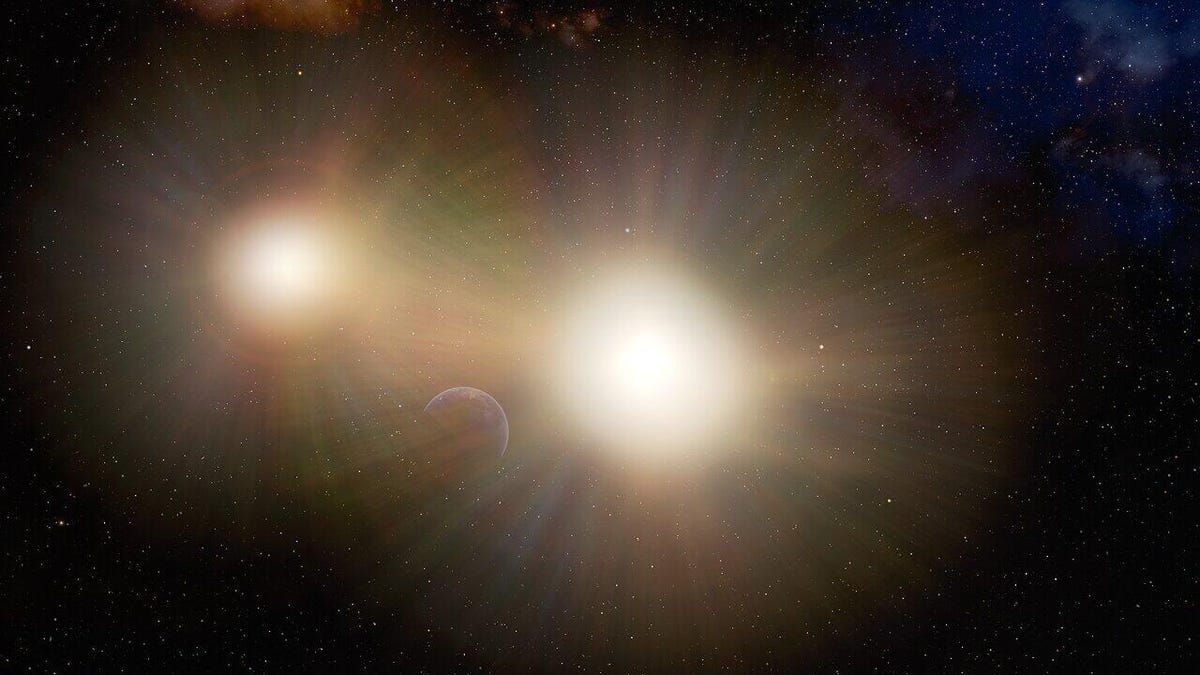Binary star systems might be hiding a bunch of Earth-size planets
Tatooine has entered the chat.
Our life-filled, watery planet is special. But exactly how special? Scientists are busy trying to find far-flung planets similar to our own, but they may have been missing a treasure trove of Earth-size planets hiding out in binary star systems.
Here's why spotting these planets is tricky. Our top method for finding exoplanets (planets outside our solar system) is using telescopes to stare at distant stars and look for telltale dips in light that indicate a planet is crossing in front, an event called a transit.
Systems with two stars can easily be mistaken for systems with only one star when the duos are close together. That can make it hard to see Earth-size exoplanets in those systems. "The light from the second star makes it more difficult to detect the changes in the host star's light when the planet transits," said the National Science Foundation's NoirLab astronomy group in a statement Monday.
The concept of a binary star system is familiar to fans of Star Wars, where Luke Skywalker's home planet, Tatooine, had two suns. Scientists have spotted some real-life Tatooine-style exoplanets. A 2019 study suggested these kinds of worlds could be good places to look for alien life.
A team of researchers from NASA's Ames Research Center examined observations from the exoplanet-hunting TESS mission and found 73 star systems that were actually binary. They took a closer look at some of these using the NoirLab's Gemini Observatory, twin telescopes located in Hawaii and Chile.
"After identifying the binary stars, the team compared the sizes of the detected planets in the binary star systems to those in single-star systems," NoirLab said. "They realized that the TESS spacecraft found both large and small exoplanets orbiting single stars, but only large planets in binary systems."
The team's research has been accepted for publication by the Astronomical Journal. "This is a major finding in exoplanet work," said study co-author Steve Howell of NASA Ames. "The results will help theorists create their models for how planets form and evolve in double-star systems."
The search for Earth-like worlds has had its ups and downs. A study released last week suggests that Earth-like worlds capable of sustaining life may be even less common than we first thought. The new study offers an intriguing avenue of investigation, though Earth-size does not necessarily mean a planet might be habitable.
The study also offers astronomers new challenges. One is to make sure a star system is single or binary, and another is to more closely investigate binary systems in case they're hiding Earth-size planets.
Said lead author Kathryn Lester of NASA Ames, "Since roughly 50% of stars are in binary systems, we could be missing the discovery of -- and the chance to study -- a lot of Earth-like planets."
Follow CNET's 2021 Space Calendar to stay up to date with all the latest space news this year. You can even add it to your own Google Calendar.


